#Egyptian Cultural Library
Explore tagged Tumblr posts
Text

#ancient egypt#ancient#giza#egyptian#egyptology#pyramids#egypt tours#egypt#ancient history#history tag#archaeology#anthropology#world history#culture#history#cartography#map#library
197 notes
·
View notes
Text
Egyptian natural culture-Samsung TV art

Immerse yourself in the enchanting world of Egyptian culture, where ancient traditions blend seamlessly with lush greenery and breathtaking scenery. Explore the heart of Egypt, where every corner tells a story, and every view is a feast for the eyes. From the timeless beauty of its landscapes to the vibrant heritage of its people, discover the soul of Egypt like never before

Egyptian natural culture-Samsung TV art
#design#anime#youtube#books & libraries#cute#Egyptian Heritage#Egyptian Culture#Samsung TV Art#Digital Art Display#Nature-Inspired Art#Samsung Frame TV#Modern Display Art
1 note
·
View note
Photo
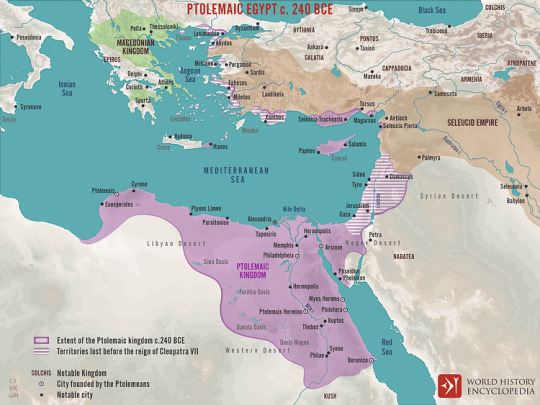
Ptolemaic Egypt
Ptolemaic Egypt existed between 323 and 30 BCE when Egypt was ruled by the Macedonian Ptolemaic dynasty. During the Ptolemaic period, Egyptian society changed as Greek immigrants introduced a new language, religious pantheon, and way of life to Egypt. The Ptolemaic capital Alexandria became the premier city of the Hellenistic world, known for its Great Library and the Pharos lighthouse.
From Persian Rule to Alexander
In 525 BCE, Egypt was conquered by the Achaemenid Empire, beginning a period of harsh foreign rule and cultural repression. Egypt briefly regained its independence from 404 BCE until 342 BCE before it was reconquered. Discontent with the Persian government resulted in the Egyptians welcoming Alexander the Great as a liberator when he invaded in 332 BCE. Alexander had already broken the Persian army at the Battle of Issus (333 BCE), and Mazakes, the satrap of Egypt, surrendered without a fight.
Alexander demonstrated a deep respect for Egyptian culture, choosing to be crowned pharaoh according to traditional custom. He offered sacrifices to the Egyptian gods in Heliopolis and Memphis and hosted Greek athletic games to celebrate his reign. Next, he traveled south to the Oracle of Amun, whom the Greeks equated with Zeus, in the Siwa Oasis. Alexander believed himself to be the son of Zeus, which the oracle seemingly confirmed for him. The idea had precedent in Egyptian royal ideology in which kings were considered living gods, the offspring of deities like Ra or Amun. It was an unusually grandiose claim for Greek rulers, but Alexander's reputation was great enough for the Greeks to accept him as a demigod.
Alexander's grand design will slowly have come to encompass the idea that all peoples were to be subjugated for the formation of a new world order; for this purpose, the Egyptian pharaonic system presented a very suitable ideology that was well established and has been accepted for millennia.
(Hölbl, 9)
In 331 BCE, Alexander visited the fishing village of Rhakotis where he planned the foundation of a new city, Alexandria. He intended for Alexandria to be the capital of his empire, a link between Egypt and the Mediterranean. Before leaving to continue his conquests, Alexander appointed two governors, Doloaspis and Peteisis, and named Cleomenes of Naukratis, a Greek Egyptian, as his satrap. He also left a small army to occupy and defend Egypt.
After the death of Alexander the Great in Babylon in 323 BCE, his general Ptolemy I became satrap of Egypt. He was nominally the servant of Alexander's successors Philip Arrhidaeus and Alexander IV of Macedon, but in reality, he ruled on his own initiative. Ptolemy I quickly executed Cleomenes, whose exorbitant taxation was unpopular, and began establishing royal policies to modernize the country. By 310 BCE, the last of Alexander's heirs had died, and during the Wars of the Diadochi, Alexander's generals claimed pieces of his empire. Ptolemy I was crowned king of Egypt in 306 BCE, establishing the Ptolemaic dynasty.
Continue reading...
99 notes
·
View notes
Note
hi can u make some hcs of hecate’s cabin/childs?
⇢ ˗ˏˋ hecate cabin headcanons ࿐ྂ
of course i can do hecate cabin headcanons! i love hecate, she's one of my favorite of the gods. also, fun fact, there's a lot of debate on where hecate originated, like they think that maybe she was an anatolian goddess that the greeks "stole," and she also has some egyptian history? i did some research on her real quick and it was honestly fascinating! anyways, here are the hecate cabin hcs!
something to note about hecate kids is that all of them, every single one, is kind of a mystery in their own respect
there's a lot of mystery surrounding hecate, so even the most open of hecate kids is going to have something they're keeping to themselves
hecate kids, specifically before they're kind of taught to master their abilities, have a habit of accidentally spelling people
like, for example, say a hecate kid has a really annoying kid in their bio class that won't shut up
if they think really hard about how much they want that person to shut their mouth, magically, they will
it's something they were never able to explain
until they were claimed by hecate, of course
they also all have dark eyes
not necessarily a good color, per se, but there's something about their eyes that are dark
most hecate kids get her green eyes, which could only be described as "enchanting" of course
the hecate cabin often smells like burned sage and/or incense, and always has a smoky hue because of that
there are star charts and moon charts and things like that literally everywhere, practically littering the cabin floor
hecate kids are kinda messy
all of them, just find it really hard to keep themselves organized enough to make the cabin organized enough
this gets them into trouble sometimes, but they have... ways of convincing whoever's inspecting the cabin to leave them alone
hecate kids also always have crystals in their pockets
like, literally, at any given time, with an outfit that has pockets, they have crystals that are used for different things in said pockets
they have necklaces and earrings and rings with crystals on them as well, all having different purposes based on what they want their day to be like
there are a few kids at camp who are like "crystals don't even work" and blah blah blah, but the hecate kids know better
the kids that say that are usually idiots, but yknow
(obviously i'm not saying that if you don't believe in crystals irl you're an idiot, but this is camp half-blood and their mother is hecate, so obviously they're gonna work for them)
hecate kids can sometimes be known as "two-faced" when it comes to relationships
this probably comes from the fact that their mother has three faces
except this is a more literal meaning in this sense
the hecate cabin also does a lot of tarot readings
that's like, one of the first things you learn at camp if you're claimed by hecate
everyone has their own deck, and it's customized to you, it's a whole thing
it's like hecate cabin culture kinda
if you have a hecate child friend, you've probably gotten your future read by them at one point
obviously future-telling is more an apollo cabin thing, so the predictions usually aren't correct, but it's fun anyways
ooh! and ouija boards
ouija boards with the hecate kids are so fun because they get so into it, and usually it's actually working and they're actually talking to a dead person
i mean, it's camp half-blood
probably a lot of people have died there (rip)
it's especially fun if they can manage to convince a hades child to play with them, because then the hades kid can actually hear them and help translate if the ouija boards are being kinda confusing
it's not the most reliable way to talk to a dead person, as any hades kid will tell you
hecate kids are also avid readers
not as consistent as athena kids, but they have their own little library in the hecate cabin, with lots of fantasy books and historical fiction
they're also really good with recommendations, so if you ever need a book rec, honestly go to the hecate kids first
they take your personality and reading background into account when giving you a book rec, and pretty much every time, whatever they recommend, you're actually going to enjoy
hecate kids also make the worst chariots
when they do the chariot race (i'm not sure if this is actually something they do on a regular basis, but they did it in one of the books in the original series so i'm going with it), and every cabin has to make their own chariot, hecate makes the worst chariots and get out first almost every time
honestly it doesn't really bother them anymore because they just genuinely have no idea how to make a good chariot
hecate isn't exactly known for her fighting abilities
usually in battle, the hecate kids stay as far away as possible and use their magic to help the fight
hecate kids are also criminally indecisive
they’re the masters of eenie meanie miny moe
they’re also known to have coins always rattling around in their pocket because sometimes they have to flip a coin to make a decision
they also have lots of magic 8 balls even though they know they’re faulty
(faulty, not fake 😉)
moving on
hecate kids also really like tim burton movies
it might have something to do with the fact that tim burton is a hecate child, but they also just really like the movies
they give off the same vibe
(there is a rumor at hecate cabin that tim burton used some hecate baby magic to make his movies)
only occasionally though
so yeah, that’s all i have for hecate kids
they’re all super unique and interesting
they are definitely sort of strange, but that’s what makes them so cool!
sorry if that was awkward i never know how to end these things
so that’s it for hecate cabin hcs! i had so much fun writing this, and thanks so much for the request! i just wanted to say thank you to everybody liking and following and reblogging for the support, this is already so fun! i have a couple requests for different cabin headcanons and that i haven’t been able to get to because ive had to rewrite this one about three times, which is kinda frustrating, but i love how that turned out! thanks sm for reading!
#percy jackson#percy jackson and the olympians#pjo#heroes of olympus#hoo#riordanverse#riordanverse headcanons#cabin headcanons#hecate#hecate cabin#cabin 20#camp half blood#chb#chb hcs#percy jackson x reader
477 notes
·
View notes
Text
"plus...he's adorable"
steven grant x reader, first meeting
warnings: slight age gap?
*not my gif*
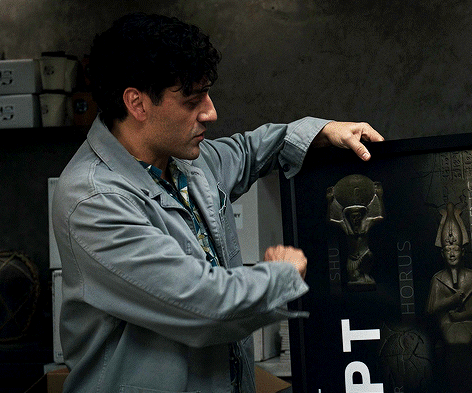
finding your passion hadn't been a straight and narrow path. you had no idea how some people just woke up knowing exactly what they wanted to do for the rest of their lives.
in high school you played sports, but they were never something you wanted to do as a career. you recently learned that you love to paint, but it just felt like a hobby. you didn't feel experienced enough to make something of it.
you'd gone to four years of university, majoring in business because it's what your parents wanted. but you were tired. you were so tired and you weren't passionate about anything.
finally, you were sure you were ready to give up. you were in the school library, turning in some text books you'd used, when you just glanced over briefly. your eyes caught the title of a large book.
"If You Are to Love, Love the Moon"
curiosity took over and you picked it up to read the synopsis. by the time you were done, you'd picked out three more books on the subject and plopped them down in front of the librarian.
it took you less than twenty-four hours to finish all of them and you had this burning desire to know more.
which led you here, studying egyptology abroad in london, standing in the national gallery, staring at a poorly constructed pyramid of giza.
"oh bullocks!" you heard a man shout just as something crashed to the ground. you searched for where the noise came from.
your eyes landed on dark brown curls peeking out just above the counter at the gift shop.
nosily, you made your way over. as you placed your hands on the counter you cleared your throat. a man with steven printed on his name tag stood up quickly and gave you a nervous chuckle, "morning."
you suppressed your laughter, "hey there. you alright?"
"me? yeah, fine!" he said unconvincingly. "did you want to make a purchase? i personally recommend the horus figurines. you know, it's believed that he was a benevolent protector in ancient egyptian culture. plus..." he held one up, "he's adorable."
this time you couldn't help but laugh, and thought the same thing of steven himself.
"i'll take one," you said and watched as he rang it up.
he glanced up at you as he put it in a small gift bag, but quickly looked back down when he noticed you'd caught him.
you reached to grab the bag, but paused as your hand brushed his. steven was stunned by the feeling of your hand against his and didn't want you to go.
"do you live nearby?" he asked slowly. you stopped yourself from grinning at the idea of him asking you out.
"uh- because we can ship items in the future," he said instead.
you frowned, "okay. well, have a good day." you took the bag and walked off. the whole thing just made you want to go home.
just as you were stepping out into the street, you were knocked to the ground.
"oh! sorry! i'm terribly sorry, i didn't mean to do that," you heard stevens voice. you got up and dusted yourself off.
"what is wrong with you?" you asked in frustration.
he rambled, "well, many things but that's a topic for another time." you had this look of concern that made steven feel guilty. "okay i'm just going to come right out and say it."
you listened intently. "i would, would you like to- do you want to grab a bite sometime?" he finally got the words out and your expression softened.
"i would love to."
steven beamed and nodded, "good. very good." he started to walk away but quickly turned back around, "actually, do you have a piece of paper?"
you searched your purse for a moment before pulling out a small sticky note and a pen. steven took it gratefully and wrote his name and number down.
he handed it to you and you noticed that it read, stev̲en with a v. the v being underlined for emphasis.
you grinned, "see you soon, steven with a v."
#marvel#mcu#fanfiction#avengers#marvel fluff#fluff#steven grant#moon knight#steven grant fluff#steven with a v#cutie#ancient egypt#london boy#steven grant x reader
236 notes
·
View notes
Text

"When Alexander the Great arrived in Egypt, he overthrew the hated Persian overlords and was welcomed as a saviour. He repaid them by showing due reverence to their long-held traditions. After his death, as the Greek empire broke up and his closest advisers squabbled over the spoils, a Macedonian general named Ptolemy seized the Egyptian throne, ushering in a new dynasty that would last for 300 years.
What followed was as dramatic and compelling as any period in Egyptian history. The unique blend of Greek and Egyptian cultures led to an unprecedented flowering of learning, as the new city of Alexandria became home to the Great Library, the largest in the ancient world, that attracted the brightest minds. Wars, incest, double-dealing, foreign empires and huge wealth all followed, but the rise of the Roman empire would eventually bring the Ptolemaic era crashing to a close.
Helped by the latest archaeological discoveries and using original papyrus documents, Toby Wilkinson uncovers a story that can only now be fully told. From courtly life to the role of women, from international trade to the tensions between native Egyptians and incoming Greeks, all aspects of life are here. Filled with surprising insights, vivid descriptions and larger-than-life characters, and written in the author's compelling narrative style, The Last Dynasty will appeal to all lovers of history, archaeology, art and culture."
— The Last Dynasty: Ancient Egypt from Alexander the Great to Cleopatra, by Toby Wilkinson
48 notes
·
View notes
Text
Hellenistic Alexandria

When Alexander founded in the Nile Delta one of his many Alexandrias in 331 BCE, he would have been overjoyed to know that this settlement would later become one of the cultural capitals of the ancient world—a city that still bears his name today. This location was not entirely unknown to the Greeks. In fact, it was on the nearby island of Pharos, just across the limestone ridge where Alexandria would rise, that Homer situated the abode of Proteus, a prophetic sea god. Nor was Alexandria completely barren; the small Egyptian fishing village of Rhakotis, which would later become one of the city’s neighborhoods, was already established there. The site’s potential as a trading hub was evident from the thriving nearby ports of Canopus and Heracleion.
Researching Alexandria presents significant challenges. One major obstacle is that the city has been continuously inhabited since its founding, which severely limits opportunities for excavation. However, recent archaeological surveys and explorations of the old harbor—now submerged beneath the Mediterranean—have uncovered remarkable treasures and provided invaluable insights. For example, the discovery of several statues depicting Ptolemaic kings as pharaohs has challenged the long-held perception of Alexandria as a purely Greek-looking city. While the predominance of Greek culture is not disproven, these findings add nuance to previously accepted views. Nevertheless, much of what we know about Hellenistic Alexandria still relies heavily on literary sources, such as the writings of the geographer Strabo.
After Ptolemy I Soter gained control of Egypt following the Partition of Babylon in 323 BCE, he initially ruled briefly from Memphis before relocating with his retinue to Alexandria. Under his leadership, the city continued to grow and prosper. Alexandria was organized as a Greek polis and has often been regarded as distinct from the rest of Egypt. This distinction is notably reflected in its later Roman designation, Alexandria ad Aegyptum, meaning "Alexandria by Egypt," rather than "in Egypt."
Alexandria has often been described by ancient authors as being shaped like a cloak (chlamys), stretching approximately 6 kilometers from east to west and only about 2 kilometers from north to south. The city’s neighborhoods were laid out according to an organized grid plan, a design attributed to Deinokrates of Rhodes. Historically, both scholars and the public were quick to regard this type of urban organization as an enlightened Greek invention. However, the Egyptians had been building towns in this manner for centuries. One of the defining features of Alexandria, which astonished its visitors, was its broad streets lined with numerous stoai, giving the sides of the streets the appearance of a continuous colonnade.
The city was dominated by the vast palace complex of the Ptolemies, located to the east of the Great Harbour, primarily on Cape Lochias. This grand district housed the renowned Museum and Library, the tomb of Alexander the Great, and the sepulchers of the Ptolemies, eventually united within a pyramid-shaped structure commissioned by King Ptolemy IV (r. 221–204 BCE). The palatial quarter spanned between one-third and three-quarters of the city's area and included open spaces accessible to the public. These spaces hosted significant festivals, such as the Adonis festival, vividly described in Idyll 15 by Theocritus. Such celebrations were pivotal in nurturing a shared "Alexandrian" identity. Nearby, the Temple of Poseidon and the Theatre on Hospital Hill added to the city's cultural and architectural splendor.
One of the most celebrated architectural projects initiated by Ptolemy I was the renowned Lighthouse on the island of Pharos, designed by Sostratos of Knidos. Over time, the lighthouse became synonymous with the island itself. However, Ptolemy I did not live to see its completion. Beyond its practical function as a beacon for seafarers, the lighthouse served as a powerful piece of state propaganda, symbolizing the might and grandeur of the Ptolemaic dynasty. Later hailed as one of the “Seven Wonders of the World,” the Lighthouse of Pharos stood as a testament to ancient engineering and ambition. Sadly, earthquakes and the subsequent reuse of its materials have reduced this once-majestic structure to little more than its foundations.
Diodoros tells us that in his time (1st century BCE), approximately 300,000 "free" inhabitants lived in Alexandria. According to Jane Rowlandson, this suggests a total population of around 500,000. Most of these inhabitants were of Greek and Macedonian descent. As vividly portrayed by Theocritus in his Idyll 15, many settlers from the Hellenic world initially retained the identity of their mother city during the 3rd century BCE. However, a study by Willy Clarysse (1998) indicates that by the 2nd century, wealthier citizens had begun to develop a distinct "Alexandrian" identity.
In addition to Greeks and Macedonians, many other ethnic groups lived in the metropolis, including Egyptians, who resided in the neighborhood of Necropolis. The hostility and racism prevalent in the city are vividly depicted in the aforementioned Idyll by Theocritus, which describes Egyptians as nothing more than thieves. Another important community in Alexandria was the Jewish population. According to tradition, it was here that the Hebrew Bible was translated into Greek by 72 translators at the request of King Ptolemy II (r. 285–247 BCE). Over time, a significant portion of the Jewish community came to embrace Greek culture, in stark contrast to their northern counterparts, who fought wars to resist such assimilation.
Near the Egyptian quarter stood the Temple of Serapis, also known as the Serapeum. The temple, in its recognizable form, was constructed under Ptolemy III (r. 246–222 BCE). Serapis was a syncretic deity, arising from the combined worship of Osiris and Apis. He was often depicted in a Hellenized style, and tradition holds that Ptolemy I introduced this god to the settlers of Alexandria. The goal was to provide them with a local yet familiar deity they could relate to, in contrast to the traditional Egyptian gods, whose animal-headed forms were alien to the Greek settlers. At the same time, the Osiris and Apis elements in the cult ensured that Serapis also resonated with the local Egyptian population. Over time, Serapis became an immensely popular god, venerated throughout the entire Mediterranean.
Another focal point of Alexandria’s religious life was the dynastic cult. After their deaths, the monarchs of Egypt were venerated as gods, and festivals were held in their honor, such as the Ptolemaieia, the Arsinoeia, and the Basileia. The queens, in particular, were widely celebrated throughout the city.
The will of the Alexandrians was poorly represented in political life, with key institutions, such as the bouleuterion, wielding little power. There is also no evidence of an assembly of the people. The political arena was dominated by the royal family, and understandably so, as Alexandria served as the center of a Hellenistic kingdom. Nevertheless, the people found other ways to express their opinions on matters of public interest. In our sources, riots are frequently mentioned, such as the unrest that occurred after the murder of Arsinoe III. Olivier Goossens
#ancient egypt#archaeology#art history#bookworm#bibliophile#literature#ancient history#ancient greece#ancient greek mythology#hellenism
47 notes
·
View notes
Text

Sahara West Library and Fine Arts Museum (1996), Las Vegas, Nevada, by Mayer, Scherer & Rockcastle. Photo by Jeff Green.
Excerpt from:
Mayer, Scherer & Rockcastle’s Sahara West Library and Fine Arts Museum is a world apart from the Las Vegas Strip.
Karan Slein. Architectural Record, 3/97.
While a new crop of attention-grabbing hotels and casinos that feature mock volcanic eruptions, roller-coaster rides, and facsimiles of Egyptian pyramids and the Manhattan skyline dominate tourist images of Las Vegas, another kind of architecture is emerging behind the scenes, where people live. It's a parallel universe of müre soft-spoken civic mindedness.
To respond to the region's tremendous population growth the city launched an ambitious program to enlarge its fledgling library system in the early 1970s. The first step of the initiative was the installation of a new director, Charles Hunsberger, who brought with him the lessons of his previous post in Bloomington, Ind., about 25 miles from Indiana's architecturally rich town of Columbus. It's in Columbus that he "got interested in libraries and architecture and in putting them together," he recalls.
Hunsberger's masterplan for Las Vegas called for merging the one existing city library and one existing county library into a single system, the Las Vegas/Clark County library district (LVCCLD). The two buildings would be gradually supplemented by a series of architecturally distinct satellite facilities that would serve as the focus for the communities sprouting up around them. In addition to providing traditional library services-book lending and research-many of these facilities would also provide a cultural component by including exhibition or performance space.
Now numbering 23 branches, today the LVCCLD is much as Hunsberger planned it would be. Hunsberger, however, has left the scene, having quit his job in ’93, a year prior to his scheduled retirement, amid mounting backlash to his agenda.
While the expanded role of the system was praised by other library districts around the country as visionary, in recent years the hybrid of library and museum caused an uproar in the local community for losing sight of its primary objective. "I did what I planned to do," responds Hunsberger to allegations surrounding his premature departure.
With over $120 million of bond-allocated money spent on its facilities in an 11-year period, what is clear is that city coffers are now empty for libraries. The 23rd branch, the Sahara West Library and Fine Arts Museum, by Meyer, Scherer & Rockcastle, which replaced a small and successful storefront operation when it opened to the public in January, is the last of its generation. Current library district director Darrell Batson concurs: "This is it."
Garth Rockcastle, AIA, of Minneapolis-based Meyer, Scherer & Rockcastle (MS&R), the project's design architect, suppressed the split personality of the program on the exterior. Rather than make the building the amalgam of two distinct functions and parts, he and MS&R library specialist Jeff Scherer, AIA, conceived a 122,000-sq-ft whole that responds to site conditions such as views of downtown to the east and mountains to the west with an attempt to mitigate the effects of the harsh Nevada climate.
48 notes
·
View notes
Text
ruminating about tgl universe worldbuilding instead of sleeping. I know I wrote a fic where I mentioned that I imagined Alexandria to be sort of a vatican city situation (ie it is culturally egyptian but technically independent and instead governed directly by the library).
now I’m wondering if it’s more like the actual city of Alexandria is semi-autonomous within Egypt, and within Alexandria, the actual physical territory of the library is its own city-within-a-city, and entirely independent in terms of government. like a university campus within a town, if that university were also an independent micro-nation that held a huge amount of power around the world. so I think I’ve circled back around to the vatican idea again but with more of a distinction between the city of Alexandria and the library itself.
#solreefspeak#the great library#i am just saying things to myself basically#i was thinking about this and picking my skin#and then i decided to type this out so i could continue thinking about this but without picking my skin#so if it doesn’t make much sense that’s why. i am yelling into the void to fight the skin damage.
18 notes
·
View notes
Text
Time Travel Question 10: Ancient History III
These Questions are the result of suggestions from the previous iteration. I'm combining some similar ones, so some are going to be a little vague. I'm going to also split into a whole lot of different polls because there were so many good and creative ideas. (Seriously, I love the people of Tumblr).
Please add new suggestions for this category below if you have them for future consideration.
You are welcome to suggest specific things from the Library of Alexandria. There will be polls for that.
#Time Travel#The Acropolis#The Library of Alexandria#Eleusinian Mysteries#Indigenous History#Bacchus#Great Zimbabwe#Ancient Egypt#Akrotiri#Thera#Minoan#Jewish History#The First Temple#Picantes#Etruscans#Dacians
397 notes
·
View notes
Text


" im a homocidal maniac that look just like everyone else. " [ indp wendy abigail addams, It 2017 oc ] indie, semi-selective blog for WENDY ADDAMS an Original Character for 𝐒𝐭𝐞𝐩𝐡𝐞𝐧 𝐊𝐢𝐧𝐠'𝐬 𝐈𝐓 (2017) chapter 1 & 2 || separate experiences - !!

𝗥𝗨𝗟𝗘𝗦
pedos, homophobics or any weird acc dni or block me. but dont even think about interacting. The character is 9 years old so..
everything i write comes from my head, i do not use any kind of ai. if u do, maybe reconsider.
i roleplay as a hobby, i am active at any hour. Dont hesitate to roleplay with me ! ;)
in derry, nobody's history is sunshine and rainbows. dont expect wendy's backstory being that way.

𝗕𝗜𝗢𝗚𝗥𝗔𝗣𝗛𝗬
Wendy Abigail Addams was born in Derry, Maine, but the locals don't know much about her. Since she was a child, she has lived with her great-aunt, a strict woman full of superstitions who is always saying that the town is “cursed” - and Wendy has taken this to heart since she was a little girl.
Her parents disappeared mysteriously when she was just 7 years old, at a time when some “bad things” started happening in Derry. No one has ever been able to find out what happened. But Wendy remembers screams… a strange figure in the mirror… and eyes glowing in the dark. After that, she didn't speak for almost a year.
When she started communicating again, it was in a very limited way. She doesn't mix much with the other children and spends most of her time immersed in old books from the library, writing in her diary or drawing things that nobody understands (some drawings seem to have to do with Pennywise himself - even if she doesn't know what that is).
Back in the day, before her parents disappeared. Her parents always took her to funerals and taught her all about necromancy and the various ways the human body can end. She learned about ancient rituals, like how the Egyptians embalmed the dead and how other cultures dealt with the afterlife. Her curiosity about this was boundless. She loved exploring cemeteries, visiting ancient tombs and studying the things she collected - like reliquaries, bones and even items said to be cursed.
When Pennywise started appearing in Derry, Wendy already knew about the town's dark history. She sensed right away that something was very wrong - something ancient, connected to the very essence of death. Unlike the people who were afraid of the clown, Wendy looked at him in a different way, as if he were a supernatural creature. For her, Pennywise was just a form of something much bigger, a reflection of evil.
Her great-aunt always says that Wendy “is sensitive”, that she sees things that no one else sees. And, in fact, Wendy does. She senses when something dangerous is about to happen. She hears the echoes of the people who have been taken. And deep down, she knows that what took her parents is still out there… and who knows, it might try to get her too.

tags : @marshbevvie @hopelessgirrl @knyontop @venuscheered @itsdestinycriss @hugg1nsfullton @henrryboweersmain @patrickhockstettersweden25 @graveyards-end-cigarettes @lolita-hocksetter @solitudefears
#{†} wₑ𝑛𝑑𝑦 ₐ𝑑𝑑ₐ𝑚𝑠 !#bowers gang#stanley uris#losers club#it rp tumblr#it rp#it roleplay#it 2017 oc#it 2017 rp#it new oc#it oc#a new oc#it 2017
15 notes
·
View notes
Text
Books I am planning to read- tagged by @amarocit
1. Imagined Communities by Benedict Anderson. I was recommended this by my good friend @2percentsugar after he read the two essays I've put out so far on natiophagy. I suspect that the "global" analysis is probably gonna disappoint me somewhat but it seems interesting
2. Nations and states: an enquiry into the origins of nations by Hugh Seton-Watson, picked up a pdf for similar reasons to the above through a commie pan-Africanist library that had the former
3. Folktales of Egypt by Hasan M. El-Shamy. I got this book last year and still have only partially read it. Finding any book discussing Egyptian folktales is really difficult, due to a lot of academic focus being biased away from doing so. I like folklore and fairytales a lot (I grew up with the Grimms and Stories for Children by Singer, as well as a few other anthologies). The trouble is I want to post some of these online and I have to type them out manually when I do! It ends up distracting me.
4. Egyptian & Sudanese Folk-Tales (Oxford Myths and Legends), retold by Helen Mitchnik. Not ae excited about this one the way I am about El-Shamy's. He includes ethnographic and contextual info about the storytellers he interviewed and pretty directly transcribes what he was told. This is a "retelling" by an outsider thar doesn't include that information. Still might be fun.
5. Ghost Riders of Upper Egypt by Hans Winkler. I got this as part of my research into and theorization about adorcism in Northeast Africa, but put it off because it's not about zar (my specific interest area) and because I found out the author was a German in the 1940s (and while no one wants to detail what he did, yes, he was)! I have read some of it and know its got useful information but I'm not especially happy about it.
6. Chromophobia by David Batchelor. I was recommended this as part of a discussion about white supremacy, art, and fashion. It's quite concept I'm familiar with, but I'm curious to see what insight an academic analysis has.
7. Seth, God of Confusion by H. Te Velde. I've gotten interested in dissecting Set like a bug and the Chaos (sometimes feminine and full of raw power) vs Order (masculine and needs to control power) dichotomy since finding out pagan Egyptians occasionally conflated Set with HaShem, especially in Late Antiquity. This usually wasn't positive, as by this point Set wasn't viewed as a nuanced figure, but i love taking my shame and turning into something to strut around in. Also because I dislike dualism and wanna break it with a hammer.
8. On My Right Michael, On My Left Gabriel: Angels in Ancient Jewish Culture by Mika Ahuvia. A lot of people claim "angels aren't important in Judaism" to differentiate from Christianity, but that blatantly isn't true. I know a bit about Apocalyptic literature and modern folklore, and hope this will be another addition to all that.
9. Ban of the Bori. Part of my zar research, as zar was very directly influenced by Bori during the 19th and early 20th century (to the point where "zar-bori" is used to refer to a broader adorcist system stretching across Sahelo-Saharan Africa). I started this, but the writing style is insufferable to read so it's one of those academic books that takes me forever to finish.
10. The Arabic Hermes: From Pagan Sage to Prophet of Science by Kevin van Bladel. I like reading about syncretism!
11. The Devil and the Jews by Joshua Trachtenberg. I've been recommended this but haven't read it yet, and it is relevant to some Thoughts I've been Thinking
12. Torah Queeries: Weekly Commentaries on the Hebrew Bible. I agreed to help with a midrash for every parsha project, so I've been reading multiple versions of the parshas I think I'll have Ideas on and the different takes people have to respond to or just to help me get the juices going
13. Qemant: A Pagan-Hebraic Peasantry of Ethiopia by Frederick C. Gamst. An Ethiopian friend of mine has mentioned the Qemant a few times and I want to know more. TL;DR is that they're an ethnoreligion that seems to have split off from Judaism before monotheism really took hold (?).
And I'll cut it off here because we don't need to be here forever.
Tagging @2percentsugar @wanderingwriter87 @knivesandteeth @tokidokifish @idonotbitemythumbatyou @subatoism @lorenzobane @fatalism-and-villainy and anyone else who wants in!
11 notes
·
View notes
Photo
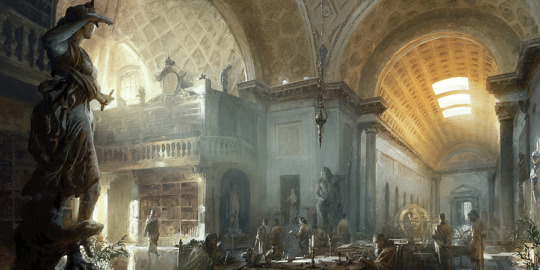
Library of Alexandria
The Library of Alexandria was established under the Ptolemaic Dynasty of Egypt (323-30 BCE) and flourished under the patronage of the early kings to become the most famous library of the ancient world, attracting scholars from around the Mediterranean, and making Alexandria the preeminent intellectual center of its time until its decline after 145 BCE.
Although legend claims the idea of the great library came from Alexander the Great, this has been challenged and it seems to have been proposed by Ptolemy I Soter (r. 323-282 BCE), founder of the Ptolemaic Dynasty, and built under the reign of Ptolemy II Philadelphus (282-246 BCE), who also acquired the first books for its collection. Under Ptolemy III Euergetes (r. 246-221 BCE), the library's collection increased as books were taken from ships at port, copied, and the originals were then housed in the stacks.
Under Ptolemy IV (r. 221-205 BCE) patronage continued, and Ptolemy V (r. 204-180 BCE) and Ptolemy VI (r. 180-164 & 163-145 BCE) made acquisitions for the library such a priority around the Mediterranean that scholars began hiding their private libraries to prevent their seizure. Ptolemy V, to undercut the prestige of the Library of Pergamon, prohibited the export of papyrus – necessary for producing copies of books, and inadvertently encouraged Pergamon's parchment industry.
The final fate of the Library of Alexandria has been debated for centuries and continues to be. According to the most popular claim, it was destroyed by Julius Caesar by fire in 48 BCE. Other claims cite its destruction by the emperor Aurelian in his war with Zenobia in 272 CE, by Diocletian in 297 CE, by Christian zealots in 391 and 415 CE, or by Muslim Arab invaders in the 7th century.
As the library still existed after the time of Caesar and is referenced during the early Christian era, the most probable explanation for its fall is a loss of patronage by the later Ptolemaic rulers (after Ptolemy VIII expelled foreign scholars in 145 BCE) and uneven support by Roman emperors leading to a decline in the upkeep of the collection and buildings. Religious intolerance, following the rise of Christianity, led to civil strife, which encouraged many scholars to find positions elsewhere, further contributing to the library's deterioration. By the 7th century, when the Muslim Arabs are said to have burned the library's collection, there is no evidence that those books, or even the buildings that would have housed them, still existed in Alexandria.
Library Established
After the death of Alexander the Great in 323 BCE, Ptolemy I took Egypt during the Wars of the Diadochi (Alexander's successors) and established his dynasty. He seems to have proposed the library as an extension of his overall vision for the city of Alexandria as a great melting pot, blending the cultures of Egypt and Greece, as epitomized by his hybrid god Serapis, a combination of Egyptian and Greek deities. According to the Letter of Aristeas, written between c. 180 and c. 145 BCE, the idea for the library was suggested by the Greek orator Demetrius of Phalerum (l. c. 350 to c. 280 BCE), a student of either Aristotle (l. 384-322 BCE) or Aristotle's student Theophrastus (l. c. 371 to c. 287 BCE), though the authenticity of this letter has been challenged.
If Demetrius did propose the idea of a universal library, however, it would easily explain the descriptions of the building which seem to mirror Aristotle's Lyceum, specifically the colonnade in which scholars could walk and discuss various issues, though the colonnade was hardly specific to Aristotle's school. Demetrius is also said to have organized the library as a home to every book ever written and proposed the name Mouseion, a temple to the Nine Muses, for at least one part of the library (the name later serving as the origin for the English word "museum"). In answer to the question, "Why was a universal library built in the relatively new city of Alexandria?", scholar Lionel Casson writes:
Egypt was far richer than the lands of their rivals. For one, the fertile soil along the Nile produced bounteous harvests of grain, and grain was to the Greek and Roman world what oil is to ours: it commanded a market everywhere. For another, Egypt was the habitat par excellence of the papyrus plant, thus ensuring its rulers a monopoly on the world's prime writing material. All the Hellenistic monarchs sought to adorn their capitals with grandiose architecture and to build up a reputation for culture. The Ptolemies, able to outspend the others, took the lead. The first four members of the dynasty concentrated on Alexandria's cultural reputation, being intellectuals themselves. Ptolemy I was a historian, author of an authoritative account of Alexander's campaign of conquest…Ptolemy II was an avid zoologist, Ptolemy III, a patron of literature, Ptolemy IV a playwright. All of them chose leading scholars and scientists as tutors for their children. It is no surprise that these men sought to make their capital the cultural center of the Greek world. (32-33)
Continue reading...
104 notes
·
View notes
Text
The Lost Gods

Grayden spent time searching in the Golden Army's library and finally found it. The book of Lost Gods.
He knew the team had multiple Gods, most notably the Greco-Roman, Norse, and Celtic Gods who blessed the team. However Grayden knew there were other mythologies like Hawaiian and Egyptian. Were there no Golden Gods from those cultures or pantheons?
Grayden found the book in a secret section of the library. One that very few bros knew about. He worried what might happen if he was seen with this book. He knew it contained forbidden lore and most were not to even know of its existence.

Grayden opened the book and began reading. Little bits of information filled his mind. He never knew that Gold had so many mythological connections. So many Gods.
But as he turned towards a section on the Hawaiian Gods, he could hear Atlas's voice ringing in his mind.
"STOP!"
"CEASE!"
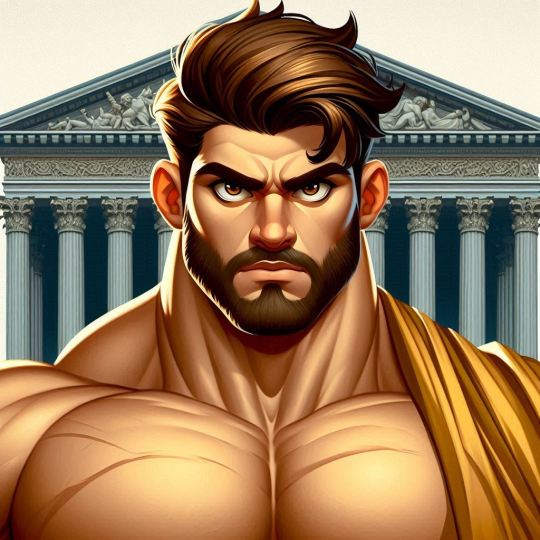
Atlas, Grayden's God form. The God he was a vessel for. Atlas was not pleased with Grayden's current pursuit of forbidden knowledge.
"Grayden, the Lost Gods are lost for a reason. If you find out knowledge about them they could bring mischief, despair, or darkness upon the team. Not all Gods are out to protect you and the team. So you must cease this now before you release something that cannot easily be contained." Atlas roared
Grayden was curious, but he knew he couldn't go against Atlas's demand. If he tried the God would take over. So Grayden returned the book, knowing only a little more about the forbidden lore of Gods of the team.
What was the book hiding? Why were the Hawaiian Gods the one that finally made Atlas intervene?
We may never know, but that is why it is...Forbidden Lore.
--------
Author's note:
Sorry this entry for the forbidden lore was later than expected. No, I will not answer questions on what Grayden read.
----------
Want to join the Golden Army? Contact one of our recruiters and they will give you some information and help you get brocessed:
@goldenherc9
@brodygold
@polo-drone-125
@polo-drone-001
#golden army#golden team#goldenarmy#gold army#join the golden team#thegoldenteam#ai generated#gold#forbiddenlore
7 notes
·
View notes
Text
The Science of Discovering the Past: Archaeology
There are many ways that we can learn about what happened in the past. Some of those ways are ancient, studying the graves of those who went before as the Ancient Egyptians of the New Kingdom did with their Old Kingdom. Some of those are newer, such as genetic studies. It can focus on architecture, artifacts, experimentation, documents, or any of a number of specialties.
Archaeology is the overarching study of human activity by recovering artifacts, known as 'material culture' or the 'archaeological record'. Archaeologists study everything from the stone tools made 3.3 million years ago to things that happened a few decades ago.
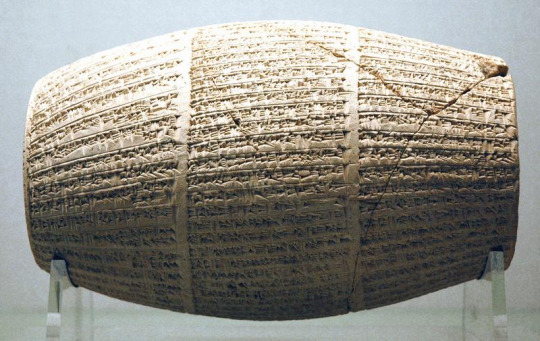
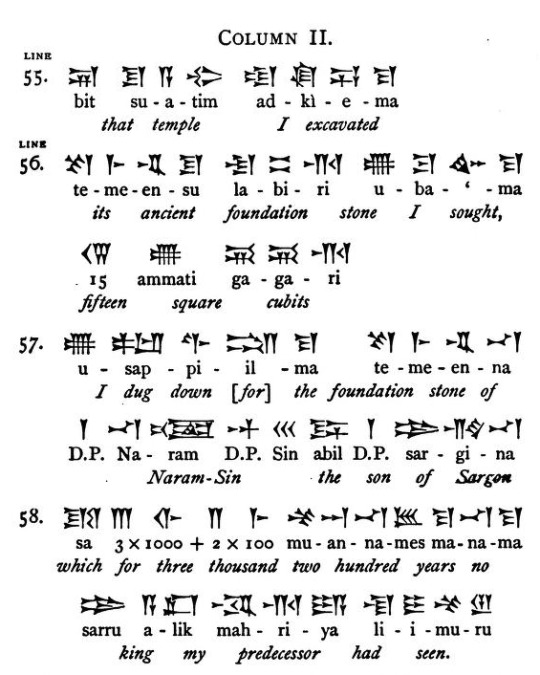
By Transferred from en.wikipedia; transferred to Commons by User:Loup émeraude using CommonsHelper.. Original uploader was Jona Lendering at en.wikipedia, and By Ernest Alfred Wallis Budge (1884) - Babylonian Life and HistoryPublished in 1884
The first archaeological studies were conducted by Khaenweset, who lived from about 1281-1225 BCE, the son of Ancient Egyptian Pharaoh Ramesses II. He studied Djoser's step pyramid, which predated him by 1400 years. This fascination led to him being called 'the first Egyptologist'. King Nabonidus, who ruled over the Neo-Babylonian Empire from 556-539 BCE discovered remains from the rule of Naram-Sin, who was an Akkadian emperor from about 2255-2218 BCE, earning him the nickname 'the first archaeologist'. The first historian is a title given to the Greek historian Herodotus, who lived from about 484-425 BCE, and made a systemic study of artifacts and stories from regions around the Mediterranean, including discussing the human causes of the Greco-Persian Wars.
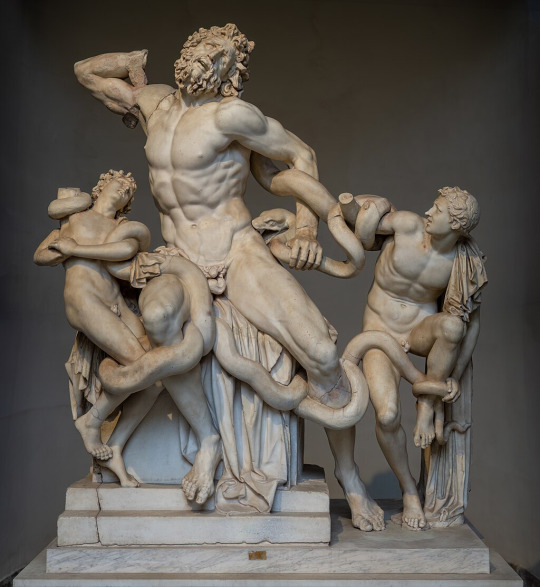
By Wilfredo Rafael Rodriguez Hernandez - Own work, CC0, https://commons.wikimedia.org/w/index.php?curid=145566250
In more modern times, those first efforts became antiquarians, those who studied ancient artifacts and texts as well as the sites they came from. This was usually conducted by the rich, who displayed those artifacts in curio cabinets. The goal of antiquarians was to 'speak from fact not theory', taking steps to the systemic study of the past and toward archaeology. Some of the first antiquarians were among the Song dynasty of China (from 960-1279 CE) where the educated gentry class began collecting ancient art as well as studying the documents of the past, those from the Shang, Zhou, and Han dynasties, from the 2nd-1st millennium BCE. In India, Kalhana wrote a history of Kashmir called Rajatarangini (The River of Kings), one of the first histories of India. The fascination with Greco-Roman civilization began in the Late Middle Ages in Europe with the rediscovery of works by Livy beginning in Italy and spreading through the rest of Europe.
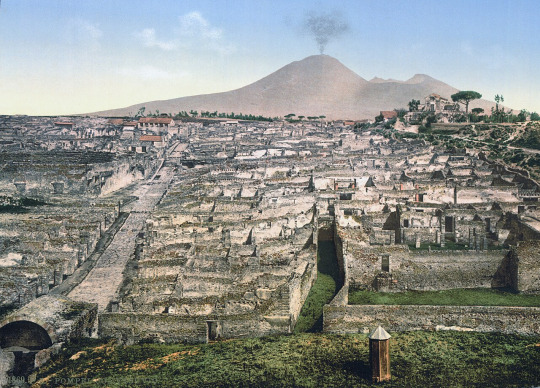
By Unknown author - This image is available from the United States Library of Congress's Prints and Photographs divisionunder the digital ID ppmsc.06584.This tag does not indicate the copyright status of the attached work. A normal copyright tag is still required. See Commons:Licensing., Public Domain, https://commons.wikimedia.org/w/index.php?curid=606843
One of the first sites to be systemically excavated was Stonehenge in England in the early 17th century. The first people to study the site were William Harvey and Gilbert North followed by Inigo Jones and the Duke of Buckingham. Following studies of megalithic sites was the study of Roman towns and hillforts. In Italy, Pompeii and Herculaneum was studied beginning in 1748 under the rule of Charles VII of Naples. In 1784, Thomas Jefferson began the excavation of Native American burial mounds in Virginia. Napoleon undertook his Egyptian campaign in 1798-1801, taking with him 500 civilian scientists with him to study Ancient Egyptian remains, including Jean-François Champollion, who deciphered the Rosetta Stone, allowing modern people to understand hieroglyphics.
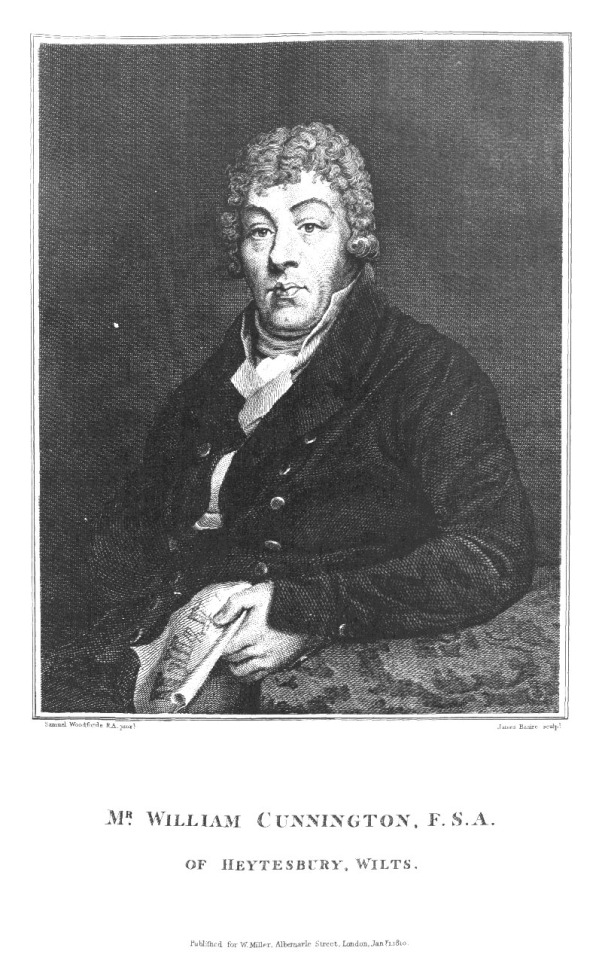
By Samuel Woodforde - http://www.greatarchaeology.com/archaeologist_view.php?archaeologist_name_start=w, CC BY-SA 4.0, https://commons.wikimedia.org/w/index.php?curid=49894634
These early studies were haphazard, however. It wasn't until William Cunnington, who lived from 1754-1810, that excavations became more systemic. He worked with a specific group excavators and was funded by multiple patrons, the richest, Richard Colt Hoare, began backing him in 1804. He studied neolithic and Bronze Age and some of the terms that he developed are still in use. He is also the first to record the use of a trowel. During the 19th century, stratigraphy, the study of rock layers, was developed. During this time frame, the concept of 'deep time' was also developed, the idea that time extends billions of years in the past rather than to just 23 October 4004 BCE as calculated by James Usher, a theologian who lived from 1581-1656.
7 notes
·
View notes
Text

I'm once again departing slightly from tradition with my December review. First, and least importantly, the poor image quality! I forgot my proper camera at work and had to bring this book back to the library, so ended up using my phone in artificial light. I've tried to clean it up some, but … yeah, it's not great. I know.
More importantly, this is a series review, not a book review. I don't feel right saying, "read part three!" when parts one and two are just as good and you'd be missing context without them. Which is sort of weird to be saying about history books, maybe, but there you go.
So, basically, the History of Ancient Egypt books by John Romer are the Egyptian history books to read, especially if you like academic histories, big picture narratives, archaeology, or decolonizing the past. They're detailed but readable, seem comprehensive in terms of sources, and are nearly as concerned with tracing the history of the "common knowledge" about Egypt as they are with describing cultural shifts within ancient Egypt itself and with busting myths.
Yes, "academic" here does mean densely informative. Each book is trying to cover hundreds, if not thousands, of years, after all. However, Romer is keenly aware of that and also aware that he's writing for a lay audience. He's warm, concise, and direct; never wanders off topic or too far down any particular track; provides copious illustrations; chooses his examples for maximum effect; and breaks down facts and misconceptions plainly. There are also anecdotes and other humanizing moments, loving descriptions of artworks, translations of ancient writings, and other moments of bringing the past to light and injecting some lightness. It might be occasionally slow, but it's far more readable than it could be.
Romer is also rigorous, in the way of a good historian. His focus is on what we truly know, what we can glean from Egyptian writings and art and other aspects of material culture, and he's good about pulling back from and pointing out the Western lens at every turn. So, he'll talk about the training and knowledge and labour that lies behind a sculpture or temple, he'll talk about the continuity of form from the Old to Middle to New Kingdoms, and he'll talk about what that says about cultural values and social organization—and then he'll bring up a 19th-century European who looked at that art and saw an ancient Napoleon or slave labour or proto-Christianity, because that European couldn't see outside his own context.
And because of Romer's focus on the archaeology, this ends up, like I said, as a big picture sort of history. There isn't much we can know about a lot of the pharaohs, let alone daily lives of other individuals, because so much time has passed and so much was never recorded. (And trying to build granular history from what's known is, as he points out, fraught, since so much Egyptian writing was formulaic and over-dramatized.) What we get instead is shifts in artistic and architectural techniques, shifts in the location of royal residences and tombs, more art vs. less art, first appearances of formulae that echo down the ages, signs of trade and international connection, and the like. Major pharaohs are mentioned, of course, and their dramatic Westernized personalities, but those also, he pares back. Yes, Akhenaten came up with a new god and apparent monotheism. No, he didn't "dictatorially force it" on the population.
Which is not to say that Romer's perfect in his stance. There have been moments in every volume where I've wondered if he's still making assumptions, or if he's backed up by the research in his bibliography and just not writing down his full reasoning. (At least some of this has to do with art criticism. Does a change in imagery or style really mean what he says it does?) There are also moments when I feel like he could stand to speculate a little more than he does, like the period near the end of this latest volume where the tombs get rushed and the tomb-builders are assigned to different projects. In other places in the books, he comments on how interesting of a shift X is, what X tells us about priorities, what forces might have prompted X—but he doesn't here. He just states facts.
(Is this me putting my own Western bias to work? Or me just wanting to know unknowable things? Entirely possible, on both counts.)
I do definitely, though, applaud Romer's commitment to decolonizing ancient Egyptian history. There has been a lot of speculation, a lot of sloppy and wishful thinking, and a lot of racism/orientalism at play in the last 250 years, after all, and it's lead to an image of Egypt that isn't substantiated. It's not just the great events, either, like Hatshepsut's "usurpation" and the "Great Man" Ramesses II and the "Sea Peoples" who seem to have been, as individual people groups, already living in the area. Romer also points out that you can't have a "market" if you don't have money, you can't have a "marriage" if you don't have weddings, and you can't map 4,000-year-old armed conflicts like you would the Battle of Waterloo (for one thing, the army is a lot smaller, no matter what pharaoh claims). A whole section of Volume 2 addresses the early French and German egyptologists and their motives, part of Volume 3 is dedicated to attempts to pinpoint the people and places of Exodus, and there is much sadness throughout the series at the roles poverty, looting, and tourism have played in the loss of the archaeological record.
So, while the series isn't entirely perfect, as I've mentioned, I find it difficult to imagine anything better, and these books feel much more complete, accurate, and grounded than a lot of the more popular histories I've come across (Egyptian or otherwise). Romer talks about craftspeople at least as much as priests and royals; blends hard dates and names with social history, geography, and historical climate studies; lays out massive amounts of information without being muddy or overwhelming; is committed to pointing out the flaws of the founders of his field; and humanizes his ancient subjects when it's possible to do so. It's masterful and impressive and clearly the result of a life's work. I want more people to read it, Egypt buffs or not. Some of Romer's points about what's knowable have stuck with me since Volume 1, which at this point is a decade ago, and this has become one of those histories I compare others to.
I sadly suspect this is the end of the series, but if it isn't, I'll be excitedly reading Volume 4 as soon as I can get my hands on it!
#books#book reviews#booklr#history#ancient egypt#a history of ancient egypt#john romer#bookblr#adult booklr#read in 2024#book recommendations#my photos
14 notes
·
View notes